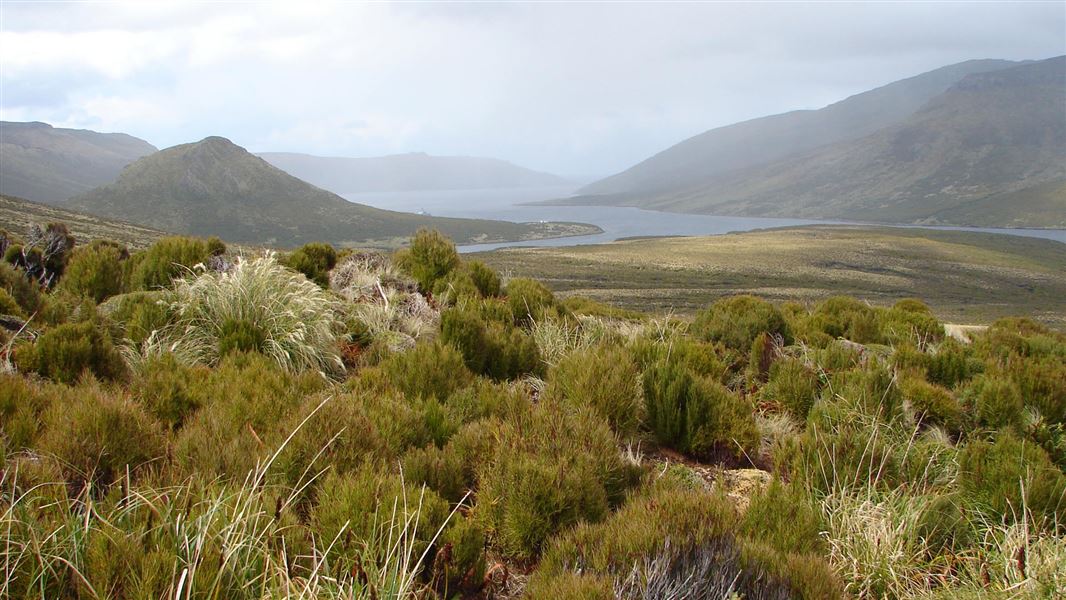For tide, boundaries and other information you can download the MarineMate app.
Visiting the islands
You can visit Campbell Island/Moutere Ihupuku Marine Reserve as part of a guided trip.
You must have a permit, and strictly adhere to the minimum impact code.
More information about visiting the subantarctic islands.
Description
Campbell Island/Moutere Ihupuku is the eroded remains of a shield volcano, characterised by large cliffs, boulder beaches and a few sandy bays. It lies 660 km south of the South Island, and it is New Zealand’s southern most island.
Campbell Island/Moutere Ihupuku Marine Reserve was created in 2014, at the same time as marine reserves for the Antipodes/Moutere Mahue and Bounty/Moutere Hauriri islands
Its marine environment comprises a narrow band of sea about 100 m deep around Campbell Island/Moutere Ihupuku and its islets, dropping to 200 m to the limit of the territorial sea (12 nautical miles). The marine reserve covers 39% of this territorial sea.
There is a “type 2 marine protected area” covering the rest of the territorial sea. This prohibits bottom trawling, Danish seining and dredging.
Marine environment
The convoluted coastline creates a range of marine habitats around Campbell Island/Moutere Ihupuku, including sheltered inlets, exposed rocky reef and deep soft sediment.
Underwater, diver and remote video surveys have revealed:
- towering pinnacles of basalt rising above the seabed
- extensive sponge beds at the entrance to Perseverance Harbour which is the largest harbour on the island
- reefs encrusted with bright pink coralline seaweeds, and
- boulder fields dominated by giant spider crabs.
The giant spider crabs are a conspicuous component of the Campbell Island/Moutere Ihupuku marine ecosystem, and their large size, a shell of over 150 mm wide, and abundance mean they are likely to play an important role in habitats where they occur.
Species
The islands are one of the world’s outstanding albatross breeding grounds, hosting six of the 22 species of albatross and mollymawk, including the world’s largest population of the Southern Royal albatross. Rockhopper penguins also breed here.
The islands are one of two subantarctic breeding grounds for the New Zealand sea lion. Southern elephant seals and New Zealand fur seals also breed on Campbell Island/Motuere Ihupuku.
Marine mammals and seabirds usually forage close to shore if there are young to feed, but some species forage over thousands of kilometres before returning to the island.
Review of the reserve
The Campbell Island/Moutere Ihupuku Marine Reserve will not be extended to the remaining 61% of the island group’s territorial sea under the Subantarctic Islands Marine Reserves Act.
